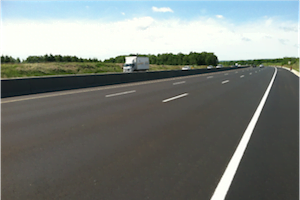More than 93% of the paved roads and highways in North America, which has by far the most in the world, are flexible pavements surfaced with asphalt mixtures. As such, even small improvements in asphalt mixture production and construction practices can significantly impact our roadway costs and performance. And when you consider the available funds for roadway infrastructure and maintenance, the cost-effectiveness and quality of constructed flexible pavements becomes even more crucial.
Join returning speaker David Hein, P.Eng., as we explore the proper construction of flexible (asphalt concrete) pavements to maximize their life, minimize maintenance and long-term costs, and contribute to sustainable roadway infrastructure. Topics include: aggregates and aggregate production; asphalt binder selection and use; asphalt concrete mix design; asphalt production and delivery; surface preparation; asphalt mixture placement and compaction; joint details; and quality control.
We’ll kick off this webinar by taking a look at our current roadway infrastructure and practices and identify the challenges (e.g., material variation and changes, weather conditions, operations, poor inspection, etc.) and the opportunities for creating sustainable infrastructure. Within this discussion, we’ll examine the fundamental design principles of flexible (asphalt surfaced) and rigid (concrete surfaced) pavements to illustrate “what matters” to improve your roadway’s life and the impact of poor construction on the functional and structural performance expectation of roadways. For example, even a strong and durable pavement that has poor ride quality due to poor construction practices will result in relatively higher levels of user fuel consumption (and resulting vehicle emissions) and lower levels of service, and may even increase average vehicle maintenance costs and damage to transported goods (or increases in required packaging costs).
We’ll also discuss the role of inspectors and how good inspection is critical (and poor…catastrophic) to the long-term success of a roadway. Finally, Hein will walk through several real-world case studies demonstrating the “cause” and “effect” of good (and poor) design—working from subgrade to pavement surfacing—and how you can avoid the impact of poor quality construction and inspection on pavement performance.
Learning Objectives
Attendees can expect the discussion and education of the following learning objectives:
- Understand basic processes from material production at the asphalt plant to placement of asphalt mixture
- Learn how to select materials consistent with project requirements
- Identify issues in the material production process that may impact the quality of the produced asphalt mixture
- Understand considerations for surface preparation (e.g. milling) and placement of layers prior to execution
- Understand the relationship between poor practices in any of the above processes and the potential consequences
- Learn the most effective inspection techniques to improve quality onsite and in-plant
- Learn the role of specifications in terms of improving the quality of constructed pavements through real-life examples from different agencies
About Instructors
Course Content



